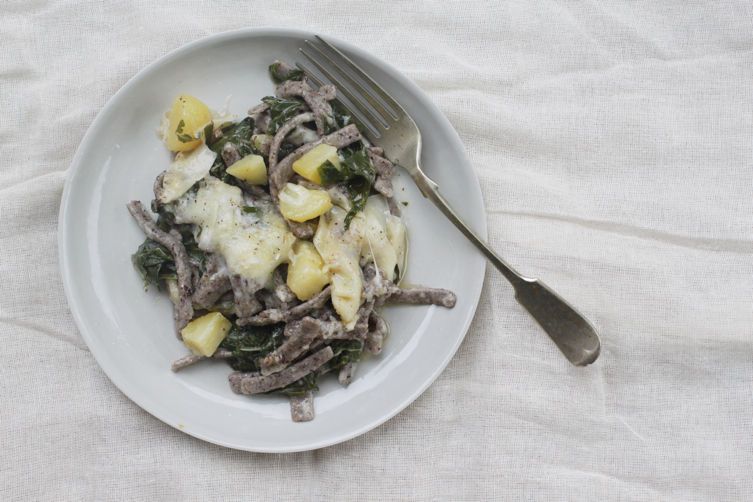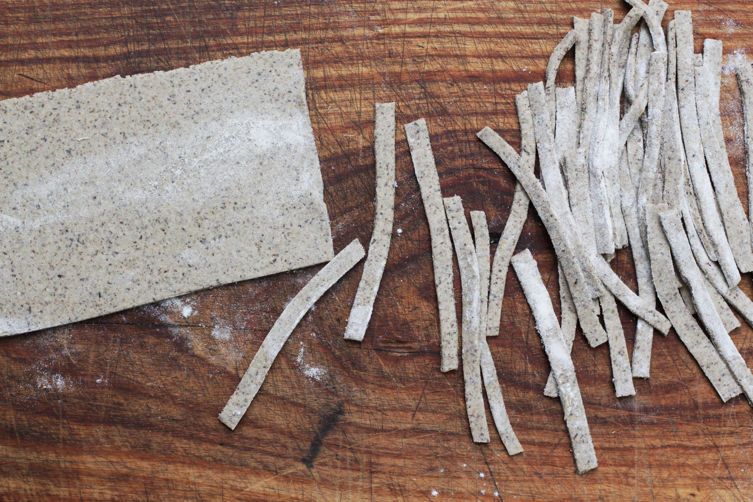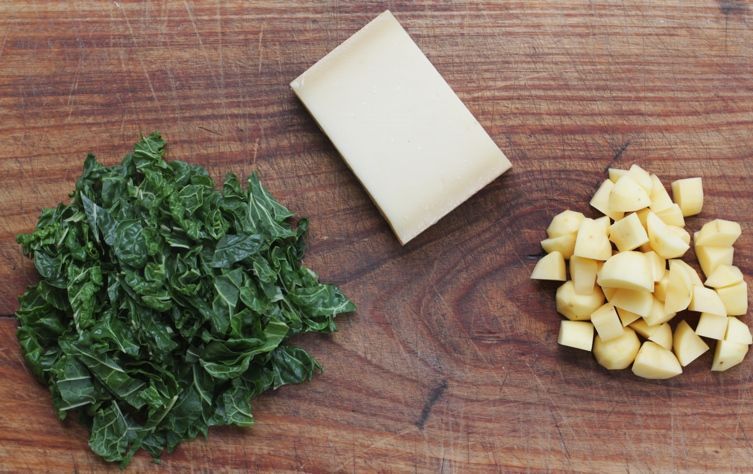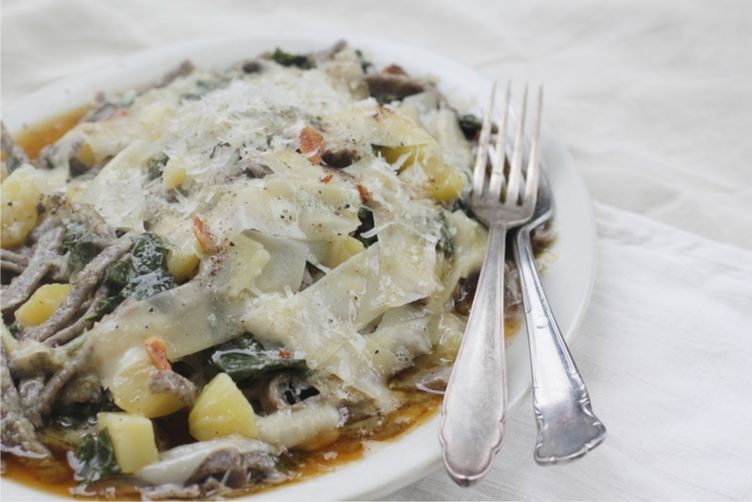Popular on Food52
10 Comments
jencordes
June 4, 2021
Does anyone know how much pasta this yields? I happen to have dried buckwheat noodles and want to make this tonight.
Rachel H.
August 19, 2014
I loved the pizzoccheri that I had at a couple of restaurants in Valle Intelvi and tried to replicate it rather unsuccessfully (with the dried pasta) but using a different recipe. Do you find the fontina gets too clumpy though? I've only made it with gruyere. Have you tried using any other types of cheese aside from the ones listed in your recipe?
Emiko
August 20, 2014
I don't find it too clumpy, though I shave it thinly so that it softens but doesn't lose too much shape. Have not tried with different cheeses though! Gruyere is a great substitute.
kr
February 14, 2014
I love it. Although I use swiss cheese sometimes b/c it's more accessible. I also love the Polenta Taragna. You can get those in the States, btw! I get the ones from Valtellina on a website called Italian Harvest. So good, but will have to try making my own.
gourmandgardener
January 29, 2014
Uh, we have cheese cheddar in Wi that has been aging for 40 yrs, Just sayin'
Ecca
January 28, 2014
Wow, this really make me proud of being born in that area!
The "Pizzoccheri" is the most known dish from Valtellina, then as you said before you have "Sciatt", "Polenta taragna" and "Taroz". I actually live in Valchiavenna which is famous for the white "variant": the "Gnocchetti bianchi di Chiavenna", made with milk and white flour and covered with the same mix of Pizzoccheri (butter, garlic, chees, black pepper and sage), excepeted for cabbage! You should check also the "Biscotti di Prosto" and last but not least...the "Bresaola" :)
Thanks for sharing a piece of my country :)
The "Pizzoccheri" is the most known dish from Valtellina, then as you said before you have "Sciatt", "Polenta taragna" and "Taroz". I actually live in Valchiavenna which is famous for the white "variant": the "Gnocchetti bianchi di Chiavenna", made with milk and white flour and covered with the same mix of Pizzoccheri (butter, garlic, chees, black pepper and sage), excepeted for cabbage! You should check also the "Biscotti di Prosto" and last but not least...the "Bresaola" :)
Thanks for sharing a piece of my country :)
SteveP
January 28, 2014
One of my absolutely favorite dishes. I do think the Savoy cabbage is the most traditional of the vegetables in there.
I spent some childhood years in the province of Varese, not so far away. To be sure, the dish is known around us, though I'd hardly call it Lombardy's favorite winter dish (you'd have to fight Lombards from other areas of the region over that!). :)
I love the buckwheat in other foods in Valtellina as well. The polenta tarragna for one, and then there is schiatt. Wish I were there now...
I spent some childhood years in the province of Varese, not so far away. To be sure, the dish is known around us, though I'd hardly call it Lombardy's favorite winter dish (you'd have to fight Lombards from other areas of the region over that!). :)
I love the buckwheat in other foods in Valtellina as well. The polenta tarragna for one, and then there is schiatt. Wish I were there now...
Emiko
January 28, 2014
Yes, as mentioned, the savoy cabbage is the most classic. And you're right, to be more precise, it's perhaps the Valtellina's favourite winter dish (but Lombardy is better known outside of Italy) :)





See what other Food52 readers are saying.